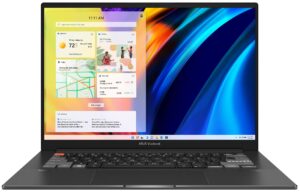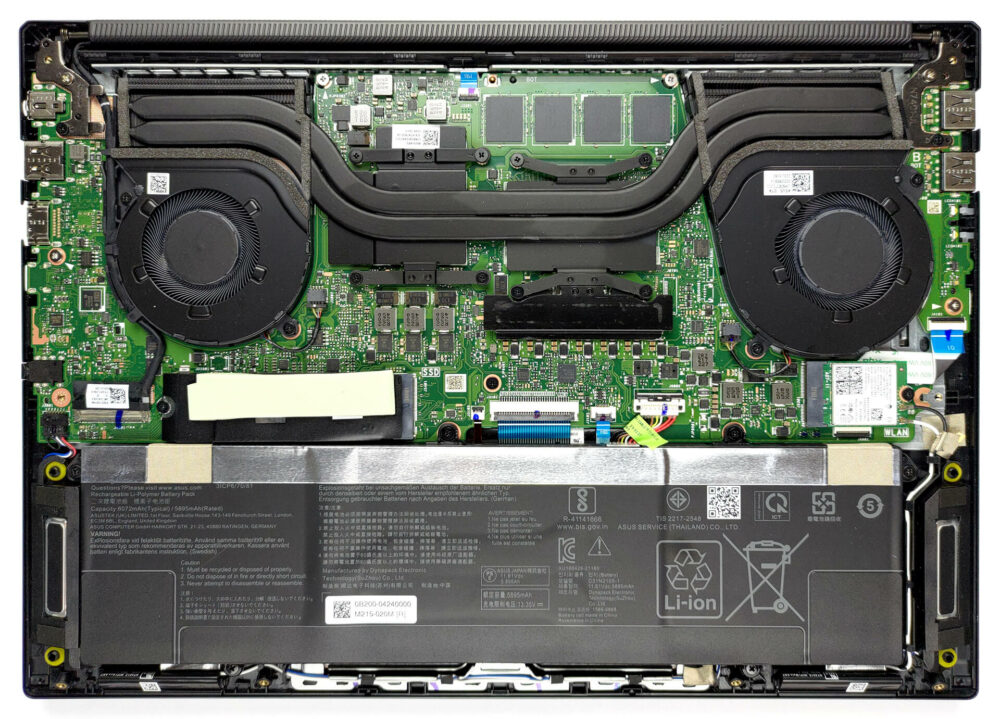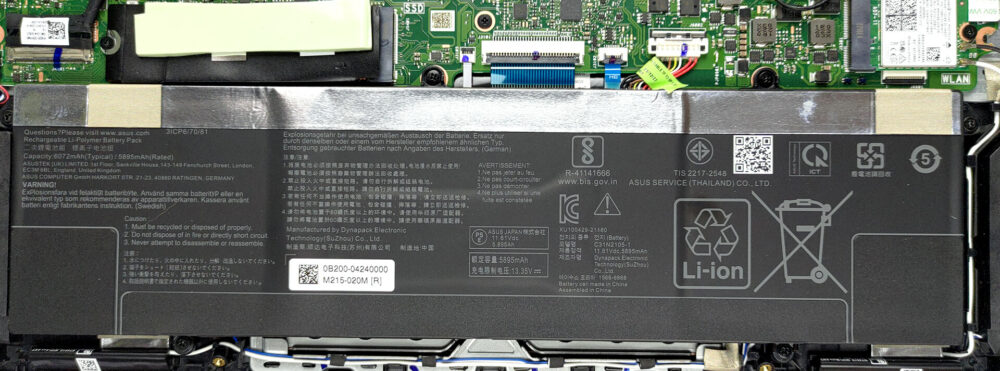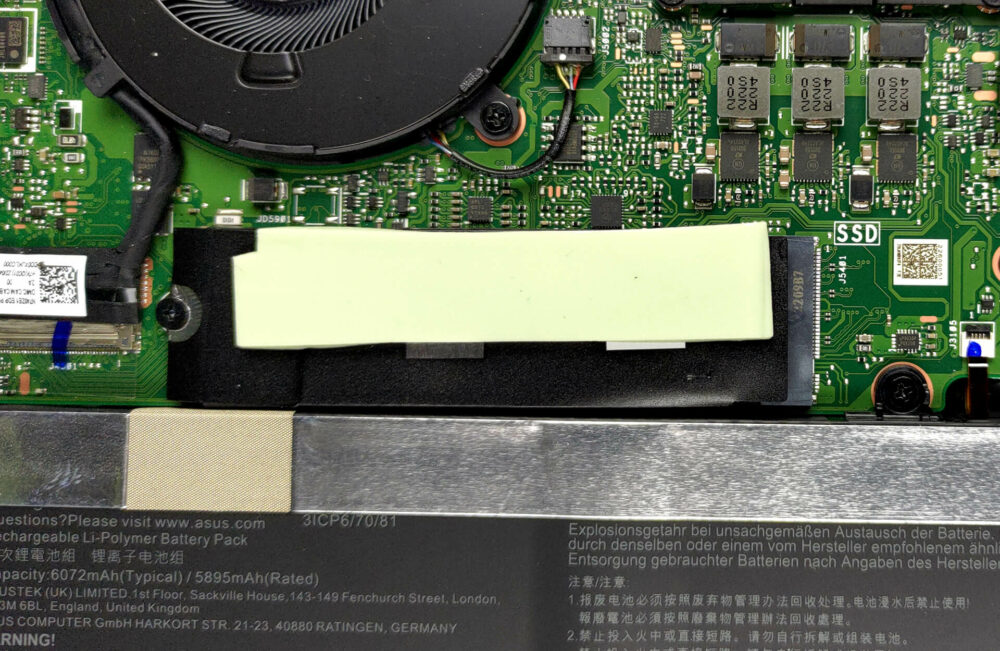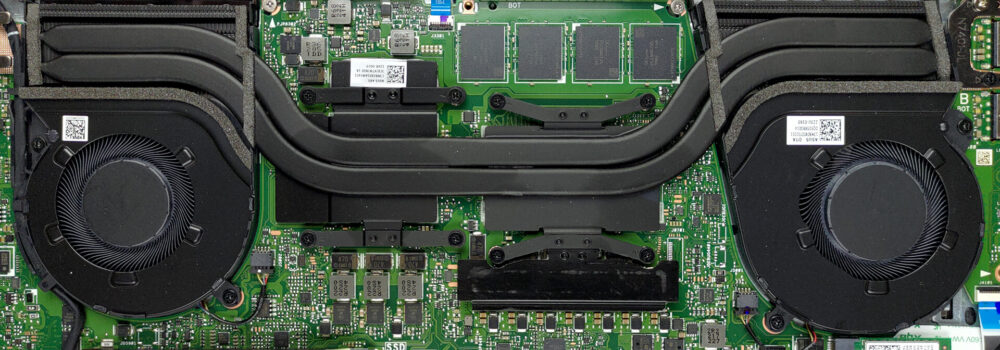How to open ASUS Vivobook Pro 14X OLED (N7401) – disassembly and upgrade options
We love powerful 14-inch notebooks. However, this one is a bit limited in upgradeability.
Check out all ASUS Vivobook Pro 14X OLED (N7401) prices and configurations in our Specs System, or read more in our In-Depth review.
1. Remove the bottom plate
To access this notebook’s internals, you need to undo 9 Torx-head screws. Then, pry the bottom panel with a plastic tool, and remove it from the chassis.
2. Remove the battery
Inside, we come across a 70Wh battery pack. It lasts for 10 hours of Web browsing, or 6 hours of video playback. To take it out, you need to unplug the connector from the motherboard and undo six Phillips-head screws.
3. Upgrade memory and storage
Here, the memory is soldered to the motherboard. You can get the device with up to 32GB of LPDDR5 RAM. Storage-wise, there is one M.2 PCIe x4 slot, which supports Gen 4 SSDs.
4. Cooling system
The cooling, comprises two heat pipes, two heat sinks, and two fans. In addition, you get some more cooling components over the graphics memory and the VRMs. ASUS states that the setup’s maximum thermal capacity is 70W.
Check out all ASUS Vivobook Pro 14X OLED (N7401) prices and configurations in our Specs System, or read more in our In-Depth review.
ASUS VivoBook Pro 14X OLED (N7401, 12th Gen Intel) in-depth review
ASUS creates a lot of high-quality devices. This includes pretty much the entire Vivobook subbrand. However, you shouldn't judge a book by its cover, or by its Vivobook branding.The machine we have in for review today is not a low-budget solution meant to help teens express themselves. Nor it is just another stylish business device. Instead, it is the Vivobook Pro 14X OLED (N7401). Yes, it will take you longer to say its name, than it would take an F1 team to change four tires and make a quick change in the angle of the front wing.However, it is a professional notebook, meant for peop[...]

Pros
- Great price-to-performance ratio
- Capable cooling
- Strong aluminum chassis
- 100% sRGB and DCI-P3 coverage + HDR support
- High resolution and 16:10 aspect ratio
- Deep blacks and virtually infinite contrast ratio
- Noise cancellation
- Fingerprint reader + DialPad
- 120Hz refresh rate with fast pixel response times
- Thunderbolt 4 + HDMI 2.1 + MicroSD card slot
Cons
- Uses PWM below 90 nits
- 2 out of 3 USB Type-A ports run at 2.0 speeds
- Soldered memory
